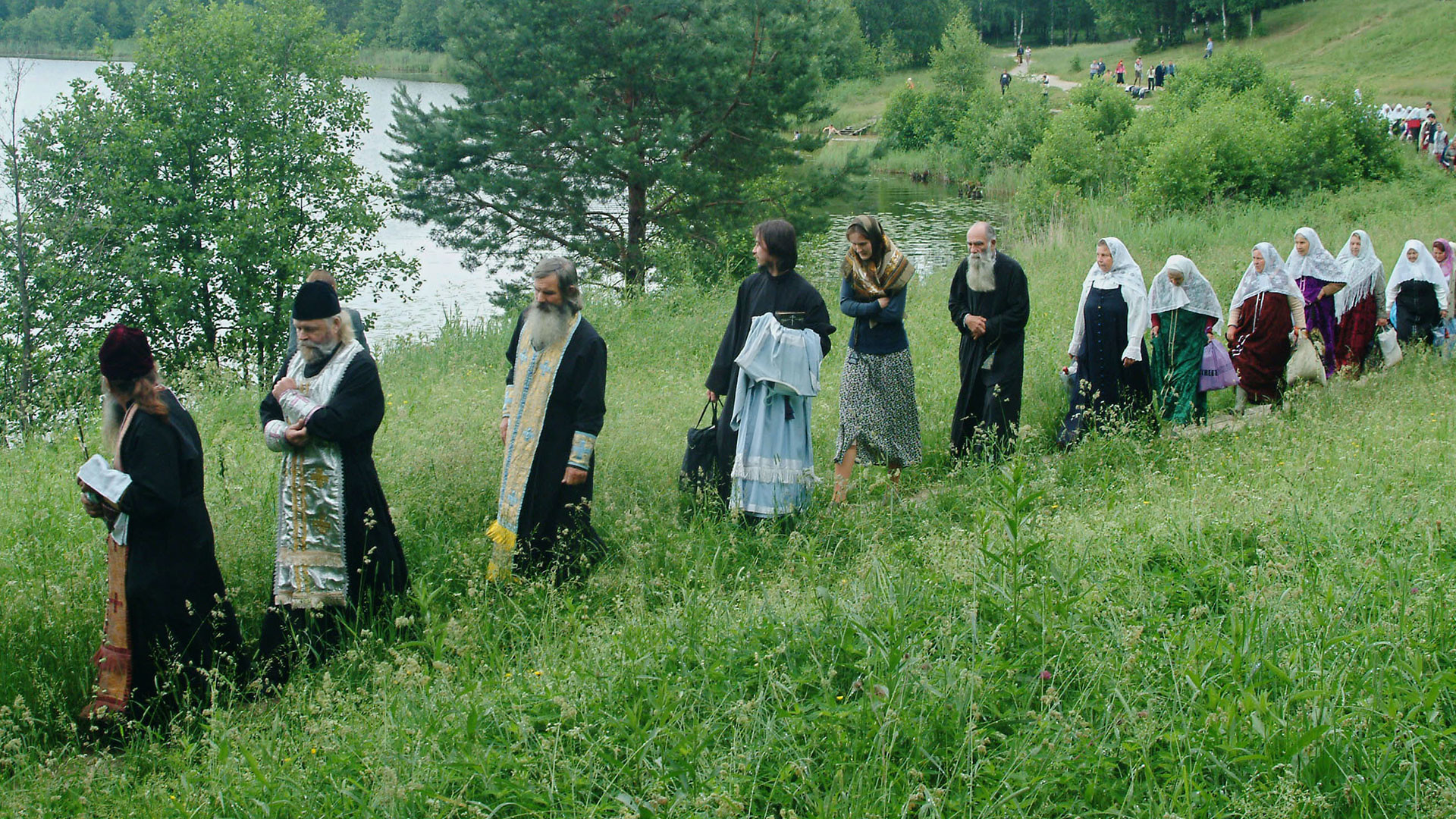
Old-believers of the Nizhni Novgorod region gathered for a service for the first time since the Revolution, 2004
Nikolai Moshkov/TASSWhat distinguishes the old and new faiths remains a matter of dispute to this day. Superficial traits (how many fingers to cross oneself with, how to bow, how many "Hallelujahs" to say) are often cited as the main differences between ordinary Orthodox and Old Believers (Russian: staroobtyatsy, literally "old ritualists"). But the schism has deeper roots. Half a century ago, the Russian Orthodox Church finally recognized the Old Believers and today advocates reunification with them. But back in the 17th century, the top-down reform of the Church by Patriarch Nikon sent shockwaves through society, the echoes of which still reverberate today.
"It was then that the apostate Nikon laid down the faith and the laws of the Church," wrote the first Russian Old Believer, Archpriest Avvakum. Nikon’s reforms of the faith marked the beginning of a major split in the Russian Orthodox Church. But first things first.
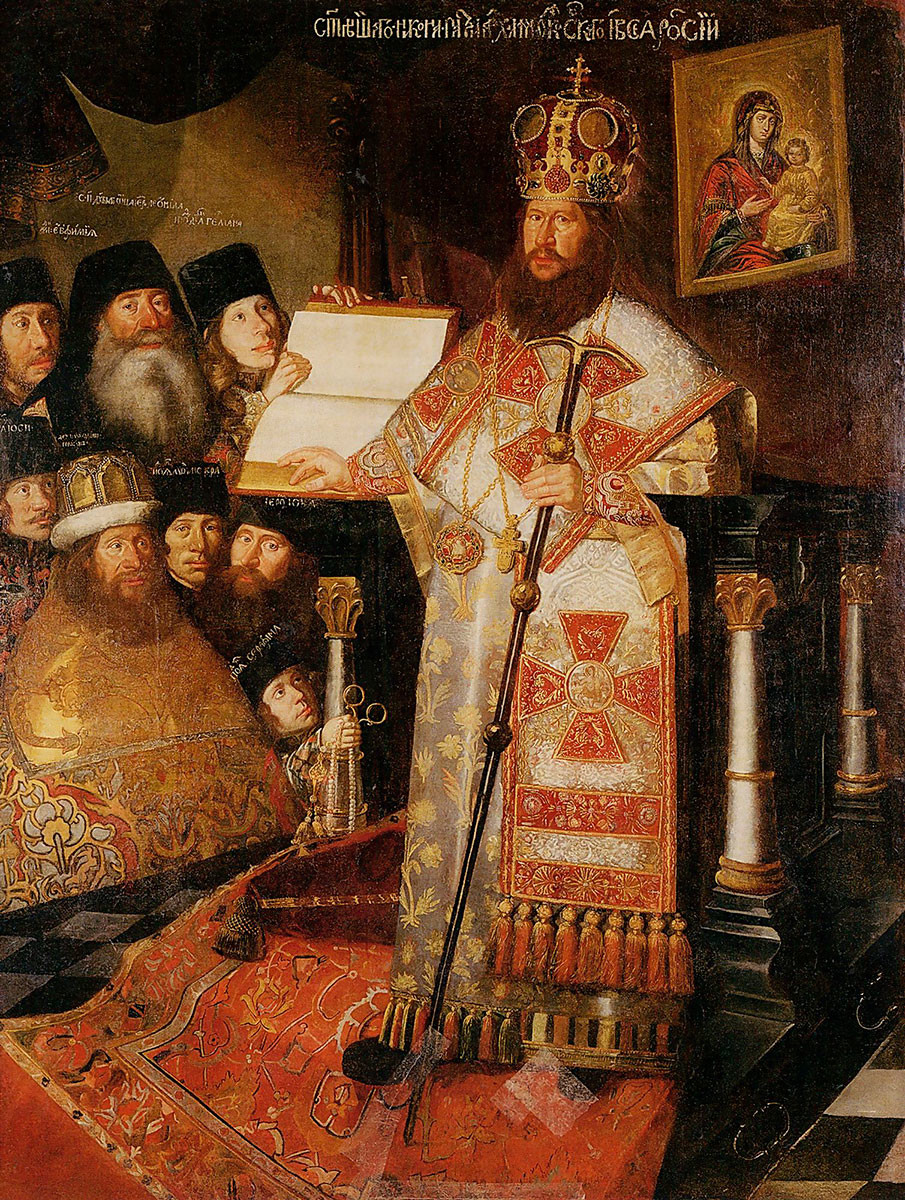
Patriarch Nikon with the clergy
Museum Exhibition Complex "New Jerusalem"Nikon was born in the Nizhny Novgorod region. Before becoming the patriarch, he served as a priest, got married and started a family. But when his children died, out of grief he entered a monastery, where he later became the abbot. It was customary for newly appointed abbots to be taken to the tsar to prostrate themselves before him, which Nikon duly did. He succeeded in making a good impression on Russia's then ruler, Alexei Mikhailovich, the second tsar of the Romanov dynasty. Desiring Nikon to be closer, the tsar appointed him to a high position at a monastery in Moscow.
Alexei Mikhailovich even accepted Nikon into the circle of the so-called “zealots of piety”, who were self-professed “God-lovers.” Their goal was to raise the level of morality both among the clergy and ordinary folk. The circle held regular meetings, and Nikon often communed with the tsar.
In 1652, followed the death of Patriarch Joseph, Alexei Mikhailovich proposed Nikon as his successor. Having secured the tsar's promise not to interfere in the affairs of the Church, Nikon set about his reforms.
1. Amendment of sacred texts
One of Nikon's biggest concerns was ecclesiastical books. While still a monk, he served in various churches throughout Russia, and everywhere the sacred texts were translated and interpreted in different ways. Nikon’s aim was to unify them. As a model, he took the Greek sacred texts from Byzantium, since it was from there that Russia had adopted Orthodoxy.
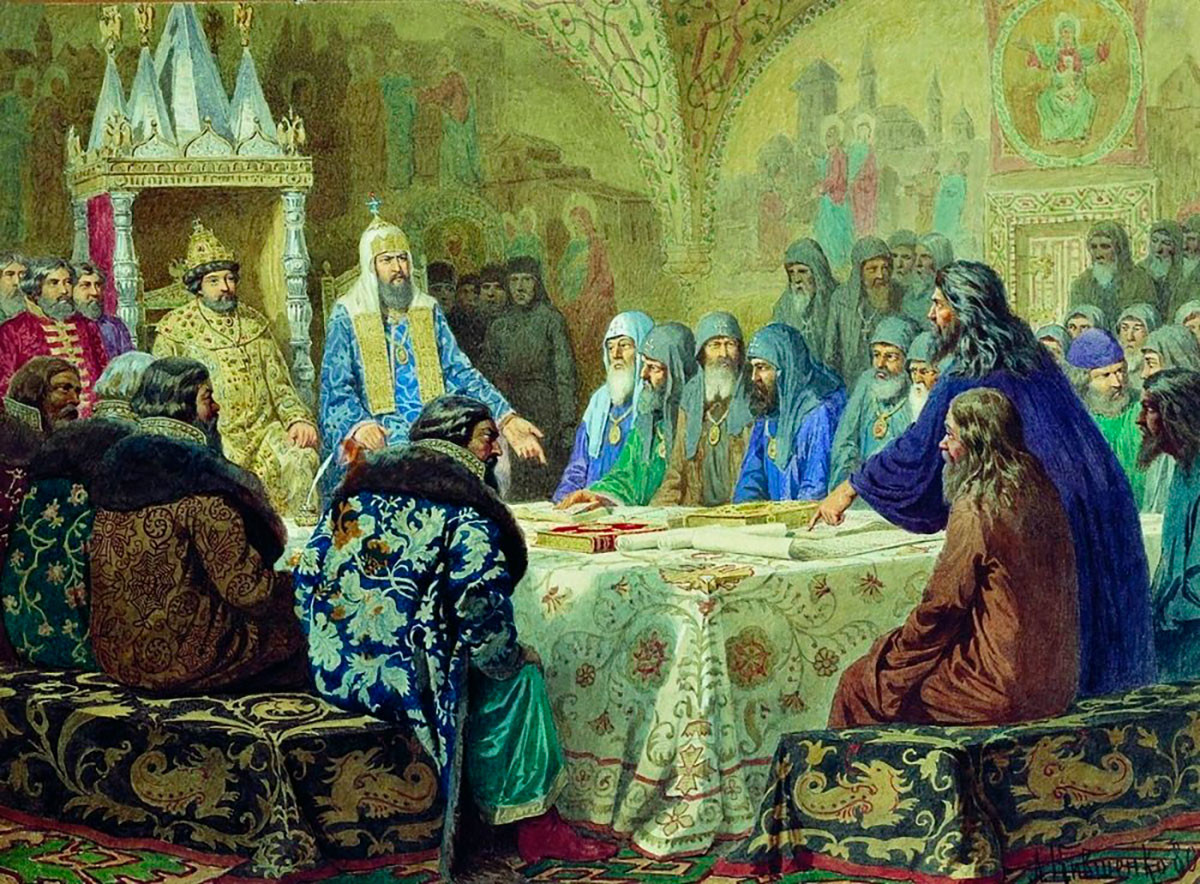
Alexei Kivshenko. Patriarch Nikon Revising Service-Books
Public DomainThus, the amendment of Scripture formed the basis of the reforms. Many corrections were made, for example, the Russian spelling of “Jesus” was altered by the addition of a letter (Iisus instead of Isus).
2. The order of service also underwent changes. One of the most prominent and controversial was the introduction of the three-fingered sign of the cross, instead of two. Also, prostrations were replaced with bows to the waist.
3. The festive Procession of the Cross with icons around the church now had to go in the opposite, anti-sunwise direction.
4. "Hallelujah" had to be pronounced three times during the service instead of two.
5. The amount of holy bread also changed. Now, instead of seven prosphora (small loaves of leavened bread), only five were used during the liturgy.
Many high-ranking clergymen were upset about the reform. In response, the tsar convened an assembly that went down in history as the Moscow Synod of 1654. However, only the issue of amending Scripture was resolved. Nikon continued to put his reforms into practice, enlisting the support of the tsar. Those who resisted were called schismatics, and later Old Believers.
Another major assembly of the clergy – the Great Moscow Synod of 1666-1667, which even Patriarch Paisius of Constantinople attended – decreed that the schismatics were rebels and should be punished.
Many Old Believers were exiled to Siberia, among them the aforementioned Archpriest Avvakum. He was the firebrand leader of the Old Believer movement and an active opponent of the reforms. It was only the tsar’s intervention that saved him from a worse punishment.
Avvakum branded Nikon a heretic and an apostate. He also blamed him for the plague epidemic of 1654-1655, which he believed God had bestowed as punishment for Nikon’s sins.
The persecution of the Old Believers was merciless: priests who sermonized against Nikon risked having their tongues cut out. Later, Avvakum too was arrested and executed – burned alive in a hut together with fellow Old Believers. This act led to a spate of self-immolations among Old Believers in protest (read more here).

Pyotr Myasoyedov. The Burning of Protopope Avvakum, 1897
Museum of the History of Religion, St. Petersburg, RussiaInfluential lay Old Believers also faced arrest. Such a scene is depicted in Vasily Surikov’s famous painting Boyarynya Morozova, in which a woman from the boyar nobility is being dragged away in shackles, but does not repent her faith, defiantly crossing herself with two fingers.
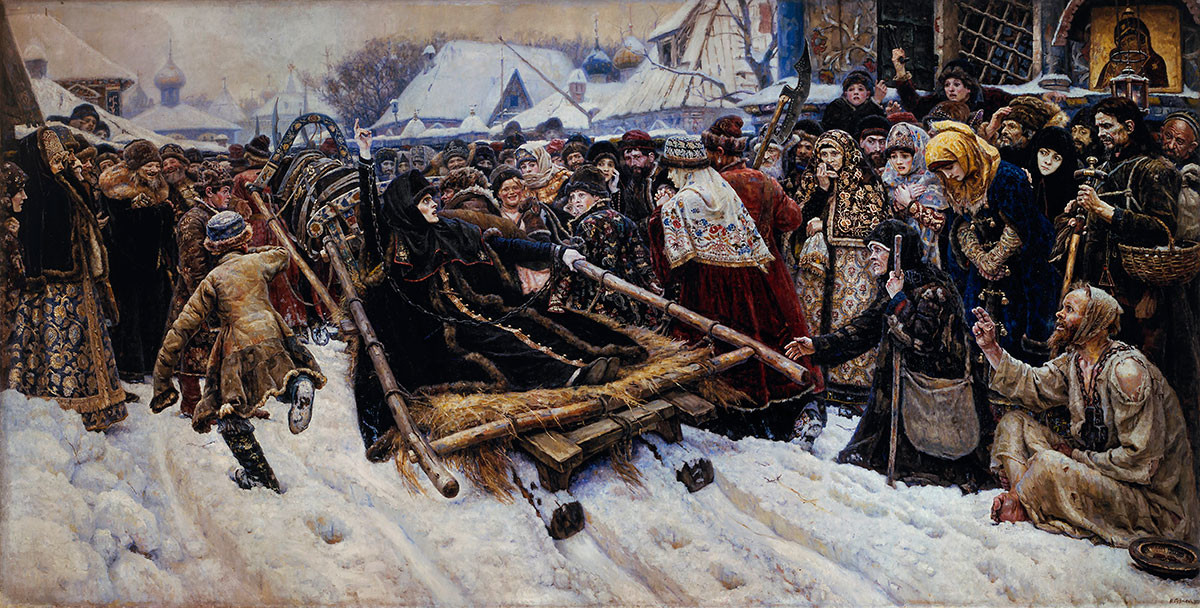
Old Believer Boyarina Morozova's arrest scene pictured by Vasily Surikov, 1887
Tretyakov GallerySometimes even whole monasteries resisted the reforms. The longest stand was taken by Solovetsky Monastery – when tsarist troops came to seize its property, the monks greeted them with steel. For eight years, 1668-1676, the monastery was effectively under siege.
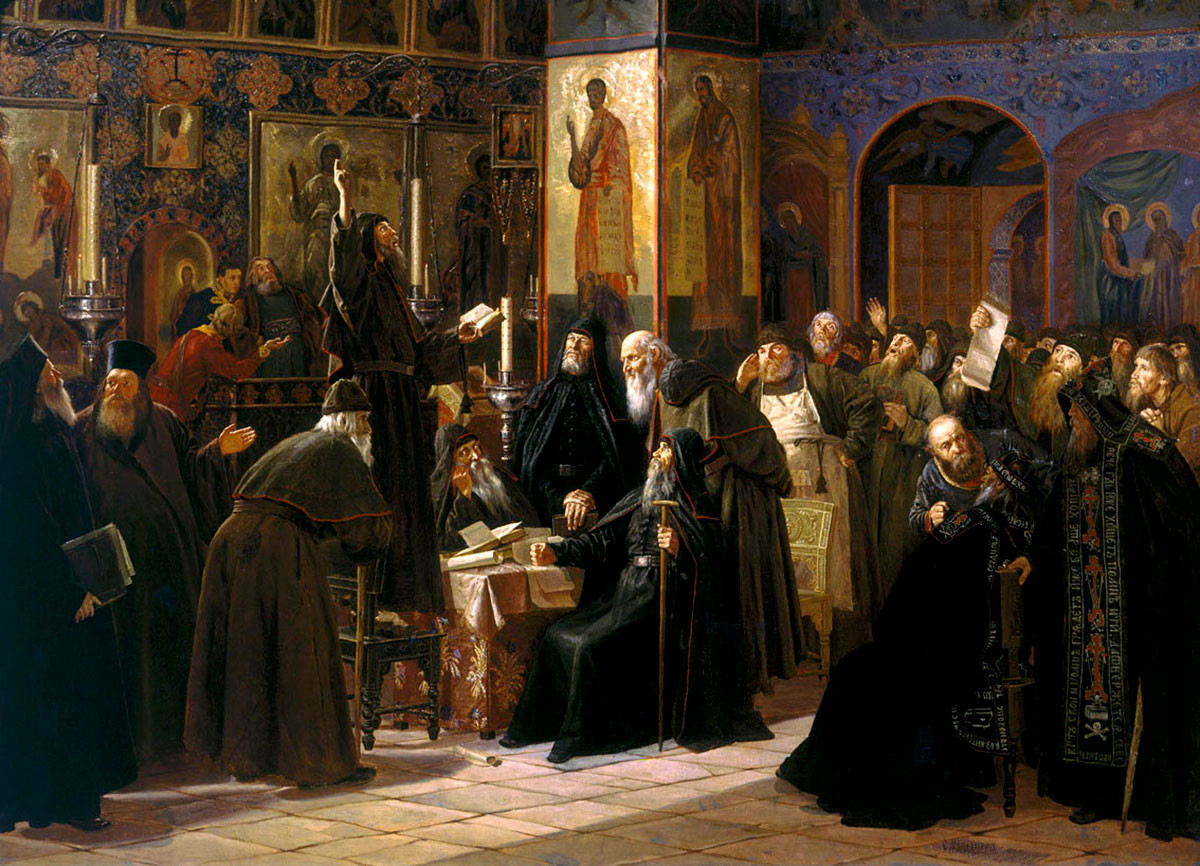
Sergei Miloradovich. Solovetsky Monastery Uprising in 1666
Tretyakov GalleryMost of the atrocities took place after Nikon had retired. His relationship with the tsar had gradually deteriorated (in particular, Nikon opposed the move to transfer monastic lands, and the considerable income from them, to the state treasury). Among the Old Believers were many influential people who turned the tsar against the patriarch. It is said that Nikon himself displayed hubris and, according to historians, tried to put the Church above the state.
A century later, Catherine the Great would castigate Nikon, accusing him of having wanted to become an Orthodox pope and to subjugate the tsar. “The three-fingered sign of the cross was imposed on us by the Greeks through imprecations, torture and death sentences,” she said.
As a result, Nikon left Moscow and holed up in his own personal fiefdom, the New Jerusalem Monastery on the Istra River, which he had had built in the image and likeness of the holy sites of Jerusalem. The tsar was displeased, and at that same Great Moscow Synod of 1666-1667, Nikon was tried in absentia.
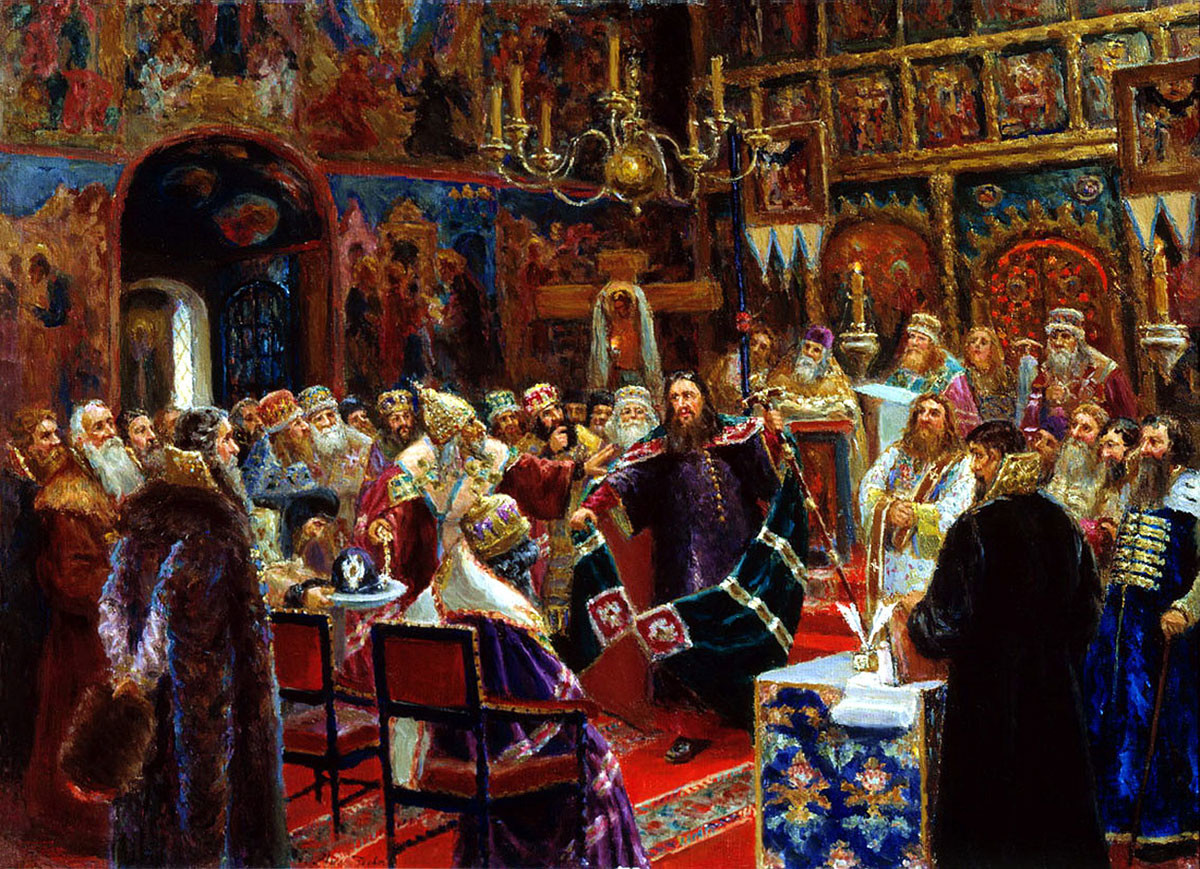
Sergei Miloradovich. Court over patriarch Nikon, 1885
Public DomainHe was found guilty of various crimes and stripped of all his ministries. As a simple monk, he was confined to the Ferapontov and (later) Kirillo-Belozersky monasteries in northern Russia, where the conditions were nothing if not austere. After the death of Tsar Alexei Mikhailovich, the sick and decrepit Nikon was allowed to return to the New Jerusalem Monastery, but he died on the way before reaching his own personal Calvary.
If using any of Russia Beyond's content, partly or in full, always provide an active hyperlink to the original material.
Subscribe
to our newsletter!
Get the week's best stories straight to your inbox